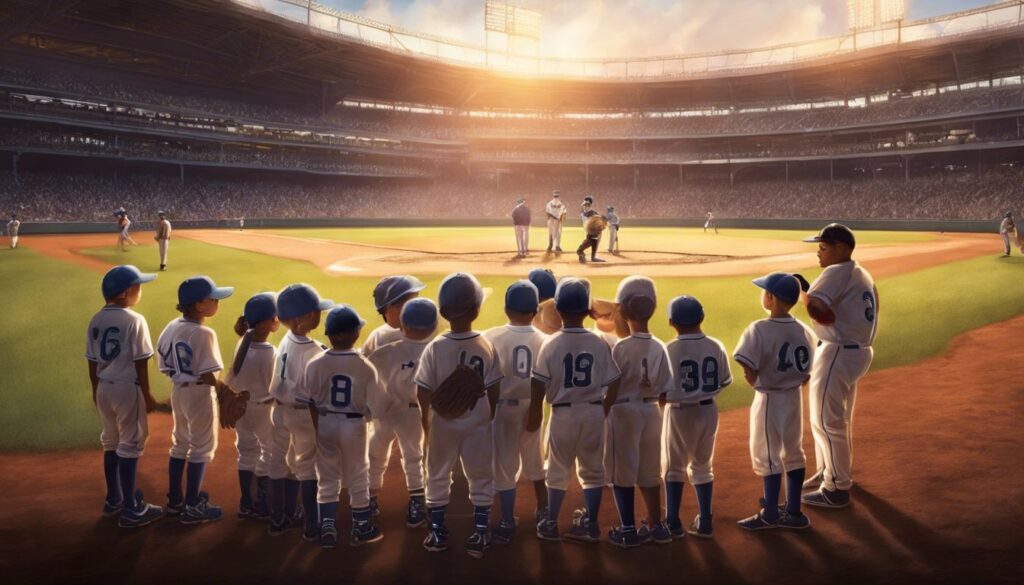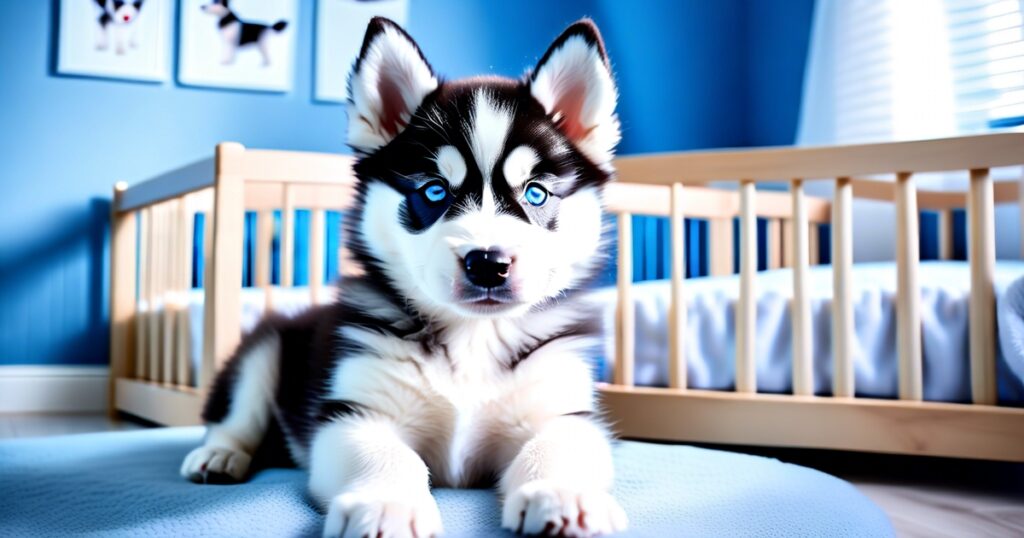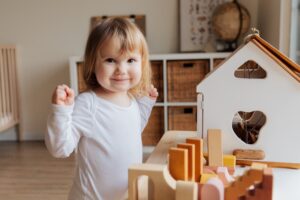Is It Safe for Baby to Sleep in MamaRoo Overnight?
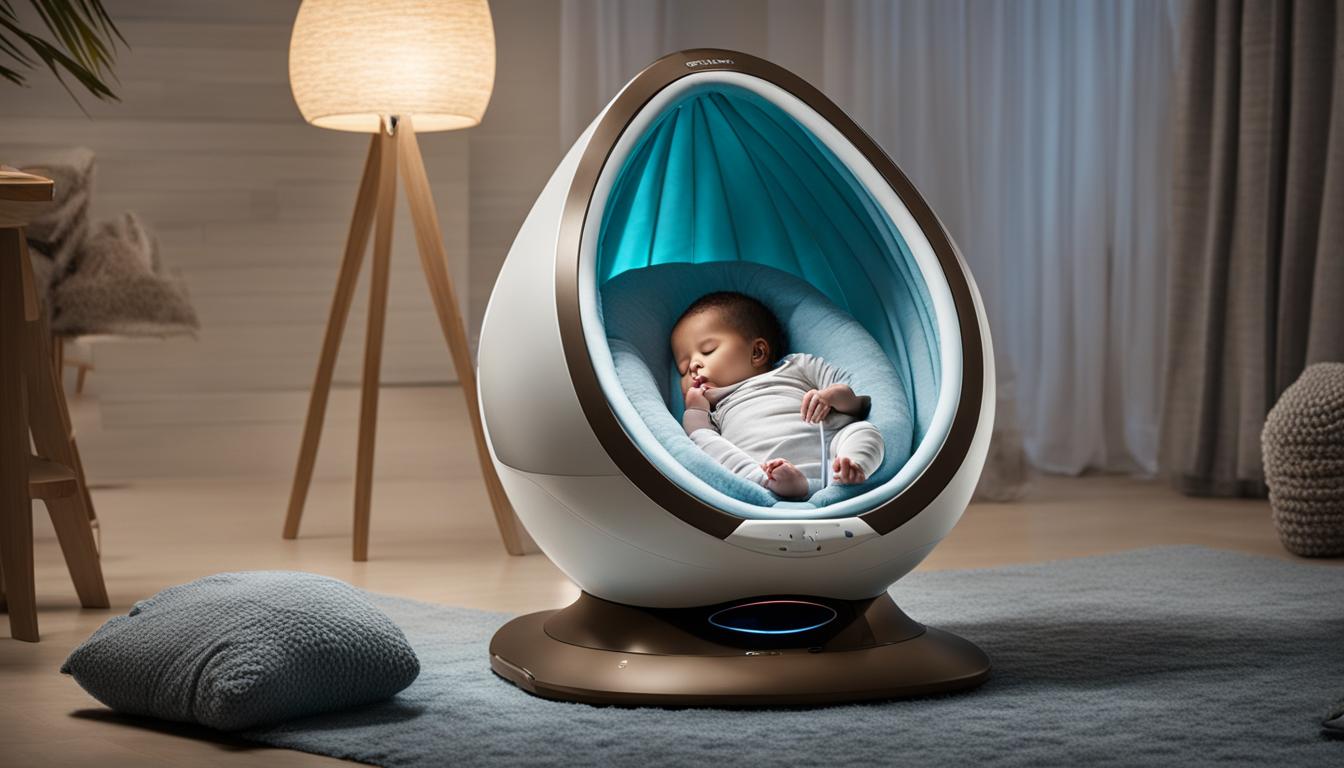
We may earn money or products from the companies mentioned in this post.
As new parents navigate the challenges of newborn sleep, the question “Can baby sleep in MamaRoo overnight?” often surfaces amidst discussions on how to achieve a safe sleep environment for the littlest members of the family. With the priority of ensuring infant sleep safety and the push for overnight sleep to be as restful as possible, the insights of baby sleep experts become invaluable. Addressing the nuances of this topic requires a thorough understanding of the American Academy of Pediatrics recommendations, a trusted resource rooted in scientific evidence aimed at optimizing newborn sleep and reducing the incidence of sleep-related risks.
In exploring the appropriateness of the MamaRoo for overnight use, it is critical to distinguish between anecdotal justifications and what constitutes a pediatrician-endorsed practice. While technology may have gifted parents with more sophisticated baby gear, the fundamentals of safe infant sleep remain unchanged and non-negotiable. Together, let’s delve into the expert guidelines and establish the essential criteria for where and how infants should slumber safely through the night.
Key Takeaways
-
Understanding the importance of a firm, flat surface for safe infant sleep.
-
Recognizing the American Academy of Pediatrics recommendations on creating a safe sleep environment.
-
Identifying the risks associated with overnight sleep in MamaRoo or similar baby swings.
-
Appreciating the value of expert advice on newborn sleep practices.
-
Accepting that convenience must not take precedence over infant sleep safety.
-
Ensuring commitment to endorsed safe sleep guidelines for the well-being of our babies.
Understanding the MamaRoo’s Design and Intent
The Mamaroo’s innovative design has revolutionized the way parents soothe and entertain their little ones. Crafted with meticulous attention to detail, the Mamaroo structure incorporates advanced technology to emulate motions that mimic the nurturing care parents naturally provide. With the Mamaroo’s introduction, 4moms has redefined the landscape of baby products, setting the bar high for baby’s safety and comfort.
What Sets the MamaRoo Apart from Other Baby Seats
In an arena brimming with baby rockers and swings, the Mamaroo design truly stands out. 4moms has infused parent-inspired motions into the Mamaroo swing, creating a sanctuary that replicates the movements parents use to comfort their babies—from swaying side-to-side to gentle bounces. The unique motions coupled with an array of soothing sound options are all controllable via a smart app or an intuitive control panel, making the Mamaroo a beacon of innovation in infant sleep and play.
The Intended Use of MamaRoo by 4moms
4moms, a company celebrated by moms’ Mamaroo creations, emphasizes that this product is, at its core, intended for supervised relaxation and play. The various settings enable parents to adjust the inclination for optimal engagement, ensuring that each baby can experience the joyous sensations whether they are looking to be entertained or require a calm environment to relax under watchful eyes. This conscious design reaffirms its role as an aid for interactive moments, rather than a replacement for a safe crib or dedicated sleeping space.
Distinguishing Between the MamaRoo Sleep Bassinet and the MamaRoo Infant Seat
The distinction between the Mamaroo infant seat and the Mamaroo Sleep Bassinet is crucial for parents navigating infant sleep solutions. While the Mamaroo infant seat caters to your baby’s relaxation with its varying recline positions during alert times, the Mamaroo Sleep Bassinet is specially engineered for rest. Complying with the guidelines for a safe sleeping space, the sleep bassinet provides a firm, flat surface to foster safe crib conditions for infants. This targeted design allows for different uses within the 4moms lineup, ensuring that there is a safe, suitable Mamaroo product for all of the baby’s needs, from alert interactive playtimes to restful slumbers.
Can Baby Sleep in MamaRoo Overnight: Expert Recommendations
The critical question of whether a baby can safely sleep in a Mamaroo swing overnight has garnered considerable attention from pediatricians and experts in infant care. When addressing newborn sleep needs, the consensus is clear—pediatrician-approved sleep strongly supports the necessity for a safe sleeping environment that is not typically provided by sitting or inclined devices like the Mamaroo swing. Parents seeking infant sleep advice should note that a regulated crib, bassinet, or playard with a firm mattress and a flat sleep surface is the unequivocal recommendation for overnight sleep.
The American Academy of Pediatrics (AAP) has set forth safe sleep guidelines to minimize the risk of sudden infant death syndrome (SIDS), advocating against the use of the Mamaroo swing for extended rest periods. While the Mamaroo’s design may be adept at soothing infants for short spans, experts emphasize that safe sleep practices such as placing a baby on a flat sleep surface, especially during overnight sleep, are essential for maintaining pediatrician-approved sleep conditions.
Parents must acknowledge the distinction between daytime engagement or supervision and the vulnerable overnight hours when the risk of SIDS is most pronounced. By adhering to AAP safe sleep guidelines and prioritizing the creation of a safe sleeping environment, caregivers can take actionable steps towards ensuring their infant’s safety. Thus, while the Mamaroo swing may have its place in the landscape of baby products, its role should be limited to awake time under direct adult supervision.
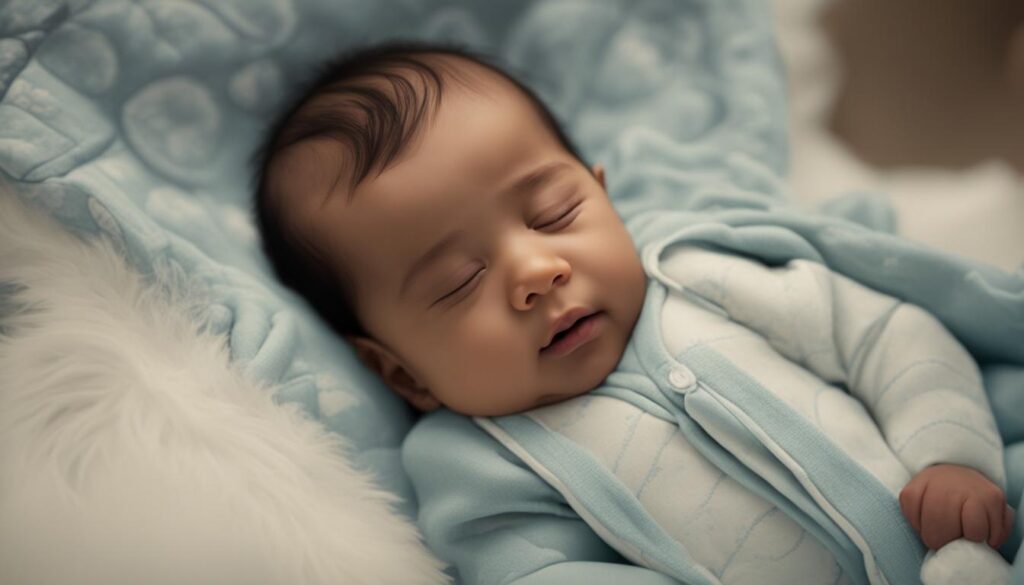
Assessing the Risks: Why Swings Aren’t for Sleeping
When it comes to our children, nothing is more paramount than their safety. In the world of parenting, convenience often battles with child safety, leading to difficult choices. This is especially true when considering baby swing risks, including those associated with popular products like the MamaRoo. It is critically important for parents to understand why these devices, while useful for entertainment and soothing, may not be the safest choices for sleep.
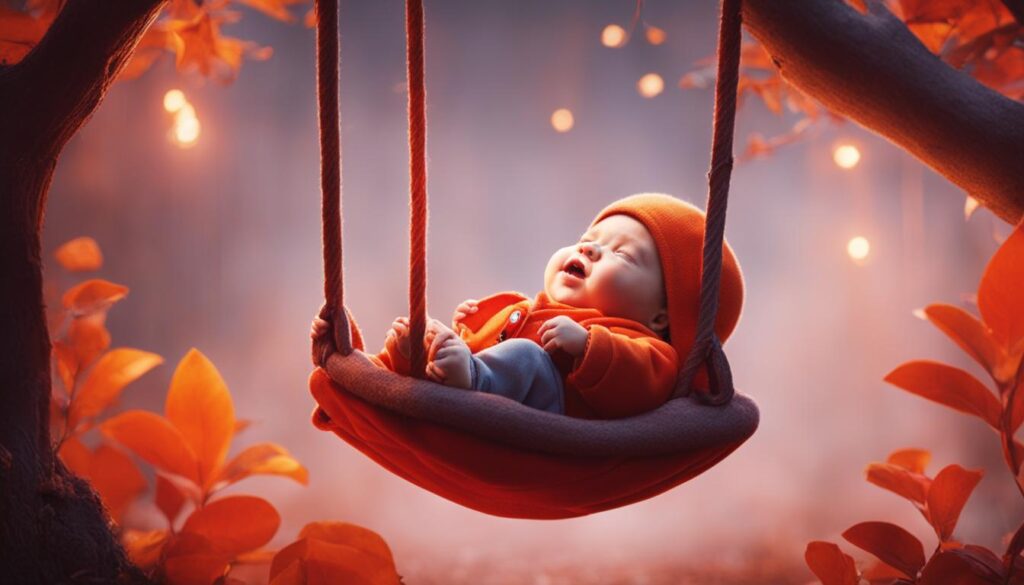
Exploring the Dangers of Positional Asphyxia
Positional asphyxia is a dire threat that arises when an infant’s airway becomes restricted due to their head slumping forward. This head position can lead to a reduced air passage and is more likely in swings, like the MamaRoo, which do not offer a firm, flat sleeping surface. The risk of suffocation is not to be understated, as it can lead to tragic infant deaths. Ensuring your baby’s sleeping environment prevents these acute angles and supports their neck properly is one of many paramount safe sleeping practices.
Understanding the Risk of Rebreathing CO₂
Rebreathing CO₂ is another hidden menace in the sleep environment of an infant, particularly when a child is sleeping in a semi-inclined swing or car seat. If a baby’s face is close to the fabric or a soft toy, the exhaled carbon dioxide can be breathed back in, leading to hypoxia – a decrease in oxygen supply to the body. This could make them vulnerable to SIDS or intense hypoxic arousal responses. Learning about and adhering to safe sleeping practices, which include laying the infant on their back on a flat surface, significantly minimizes these risks.
Deeper Sleep in Motion: A Double-Edged Sword
The gentle swaying of a baby swing might lull babies into deep sleep, which, while seemingly advantageous for exhausted parents, harbors deep sleep hazards. Slumber in motion can dampen an infant’s hypoxic arousal response, the very mechanism that prompts a baby to wake up when experiencing breathing problems. Therefore, understanding baby swing risks and avoiding Mamaroo dangers becomes imperative, consolidating the baseline of child safety for all parents. Knowledge of these factors and car seat cautions is crucial in forging the path to a safe sleep practice for all newborns.
Creating a Safe Sleep Environment for Your Baby
Ensuring your baby has a safe sleeping area is of paramount importance, and this begins by understanding and implementing the AAP safe sleep guidelines. Establishing a safe sleep environment encompasses myriad details, from selecting the right surface to establishing a consistent bedtime routine for your little one. Parents and caregivers aim to provide a safe place for sleep where their baby can rest peacefully and with reduced risks associated with unsafe sleeping conditions.
AAP Guidelines on Safe Sleep Practices
The American Academy of Pediatrics champions the need for a firm surface and flat sleeping surface to reduce the risk of sleep-related dangers for infants. By placing babies on their backs for every sleep, parents can provide the optimal position for a safe slumber. The AAP advises against the inclusion of soft bedding, pillows, or toys, which can interfere with the child’s breathing space. Instead, emphasize creating an uncluttered space that adheres to safe crib standards, promoting an environment that is conducive to a safe and sound rest.
Alternatives to MamaRoo for Sleep Time
The allure of products like the MamaRoo for their soothing motions is understandably tempting, but for longer sleep periods, pediatricians recommend transitioning to alternatives that meet safety certifications. Suitable options include stationary bedside sleepers and sleep training-appropriate cribs that are built to provide the necessary security features. These ensure that while your infant’s sleep needs are met, their safety remains uncompromised, fostering a setting that supports healthy sleep habits.
Identifying Approved Sleep Surfaces
Parents looking for recommended sleep surfaces should prioritize models that have been evaluated and conform to established safety standards. An ideal selection would be a crib or playard with a firm mattress covered by a fitted sheet, eliminating the hazards posed by softer, uneven sleeping spaces. By choosing from these regulated and attentively designed products, parents can take comfort in providing a reliable, safe place for their baby to lay their head at night.
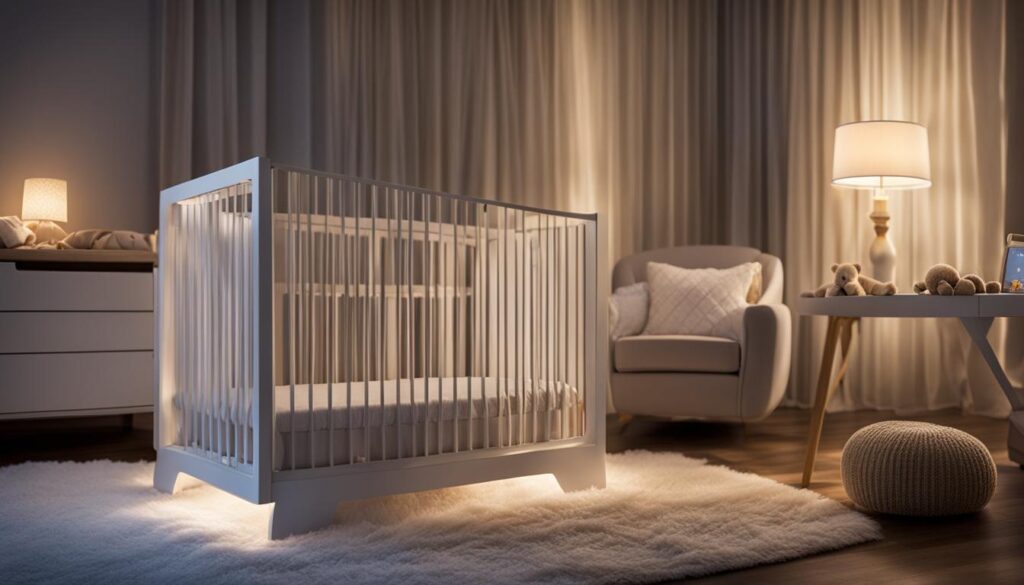
Addressing Common Misconceptions Among New Parents
When navigating the complex journey of parenthood, it’s natural to encounter an array of safe sleep myths and reflux concerns that might lead to misguided practices. A notable misconception revolves around SIDS prevention, with some believing that letting a baby sleep in items like a MamaRoo swing is a safe alternative to a crib. However, the truth is that a stationary, flat surface is crucial for a baby’s sleep safety.
Baby’s head safety is another critical consideration. An infant’s head needs to lie flat to prevent risks that can arise from an incorrect sleeping angle. This ties in with ongoing mamaroo swing debates where well-intentioned parents might overlook the baby fall risks associated with swings that aren’t designed for unsupervised sleep.
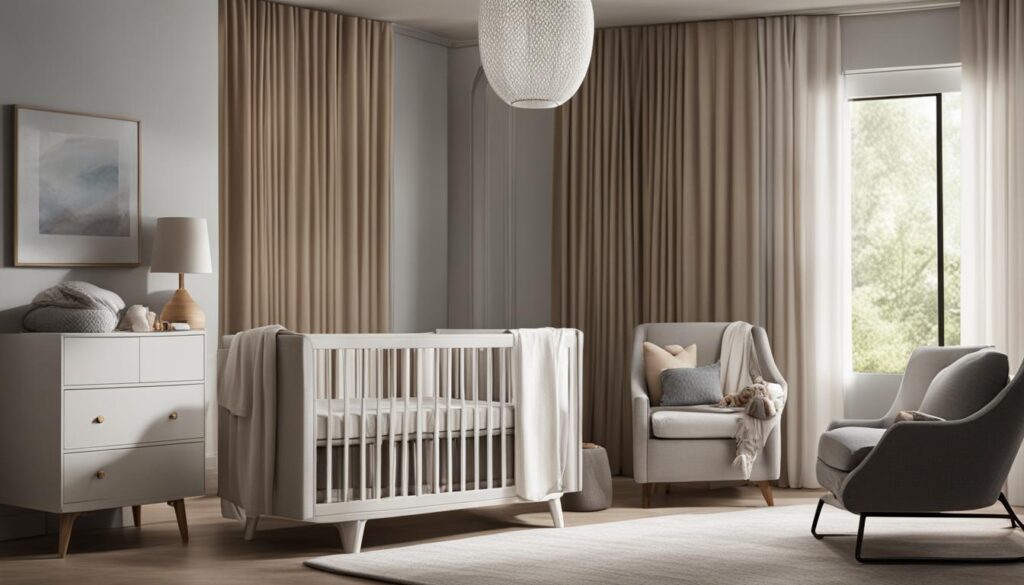
Within the realm of infant care, tummy time is essential for development, but not for sleep. Misconceptions may arise, linking it with sleep moderation virtues, but such sleep moderation myths can lead to unsafe sleep environments. Furthermore, car seat usage misconceptions propagate the misunderstanding that it’s okay for extended sleeping periods, when in reality, car seats are for travel safety, not long stretches of infant sleep.
Despite the challenges of night-time routines, incorporating accessories like the newborn insert should be done with an awareness of the sleep safety truths that advocate for a safe, firm mattress without additional bedding or padding. It’s essential to construe the clear guidelines set by health authorities to avoid the pitfalls of convenience-driven decisions that could compromise a baby’s well-being.
Infant sleep facts and authoritative guidance demonstrate that while parental instincts are invaluable, they must be reinforced by evidence-based information to establish practices that guard against SIDS and other potential sleep risks. Unveiling the reality behind these common misconceptions can foster a safer environment for every sleeping angel.
Conclusion
The evidence is compelling, and the message from baby sleep experts and the American Academy of Pediatrics is unequivocal: baby sleep safety cannot be compromised. When reflecting on the crucial early months of your child’s development, it is the steadfast commitment to safe sleeping space principles that must guide parental decisions. Understanding the science of infant sleep, caregivers must put the well-being of their child first, recognizing the silent yet substantial risk of SIDS associated with improper sleep environments.
A Call to Prioritize Safety Over Convenience
The mantle of informed parenting involves difficult choices, but the call to prioritize safety is clear. In the balancing act of infancy care, it can be tempting to yield to the allure of convenience—especially when sleep-deprived. Yet, the risks too often outweigh the gains. As the American Academy of Pediatrics outlines in their baby’s safety recommendations, each measure, from avoiding unapproved gear for sleep to adhering to safe sleep practices, plays a critical role in safeguarding our youngest.
Making Informed Decisions for Your Baby’s Sleep
Consequently, it is incumbent upon caregivers to make informed decisions that are attuned to the authoritative guidance on baby gear choices. While products like the MamaRoo may offer temporary respite, it is crucial to distinguish their proper use from their limitations, as they are not designed for extended or overnight rest. Embracing these precepts, parents can ensure that each choice made, including the establishment of a safe sleep environment, aligns with the highest standards of infant care and minimizes the potential for sleep-related dangers.
FAQ
Can my baby safely sleep in the MamaRoo overnight?
According to the American Academy of Pediatrics recommendations, it is not safe for babies to sleep in the MamaRoo overnight, as it does not provide the firm, flat sleep surface necessary for preventing SIDS and ensuring a safe sleep environment.
What unique features does the MamaRoo have that differentiate it from other baby seats?
The MamaRoo by 4moms features unique motions and sound options that mimic parent-inspired movements like rocking and bouncing. It’s designed with technology to soothe and entertain infants, controlled via an app or on the device itself.
Is the MamaRoo Sleep Bassinet different from the MamaRoo Infant Seat in terms of safe sleep?
Yes, the MamaRoo Sleep Bassinet is designed specifically for safe sleeping with a flat, firm mattress conforming to AAP guidelines. The MamaRoo Infant Seat, on the other hand, is intended for supervised play and soothing, not for prolonged or overnight sleep.
What expert recommendations exist for using the MamaRoo overnight for infant sleep?
Pediatricians and the American Academy of Pediatrics strongly recommend against using the MamaRoo, or any similar swing, for overnight infant sleep. Instead, they advocate for a firm mattress on a flat sleep surface, such as a regulated crib, bassinet, or playard.
What is positional asphyxia and how can it occur in baby swings like the MamaRoo?
Positional asphyxia can occur when a baby’s head slumps forward in a swing, which can block the airway and cause suffocation. The MamaRoo’s design does not provide a flat sleep surface, so there’s a risk of this happening if a baby sleeps in it.
Why is the risk of rebreathing CO₂ higher in swings and is it dangerous?
When babies are in swings like the MamaRoo, they may press their faces against the fabric sides, which can trap exhaled CO₂ around their nose and mouth. Rebreathing this can cause a drop in oxygen levels, leading to dangerous or fatal outcomes.
Can the motion of the swing lead to a deeper sleep and why is that risky for infants?
Yes, the motion of a swing can induce a deeper sleep in babies, which is risky because it can reduce their natural hypoxic arousal response. This means they may not wake up if they’re having breathing difficulties, increasing the risk of SIDS.
What do AAP guidelines say about creating a safe sleep environment for my baby?
AAP guidelines emphasize that babies should sleep on their backs on a flat, firm mattress, without soft bedding or toys. The sleeping area should be a regulated crib, bassinet, or playard that meets current safety standards to minimize the risk of sleep-related dangers.
What are suitable alternatives to the MamaRoo for safe sleep?
Suitable alternatives include regulated cribs, bassinets, and play yards specifically designed for safe infant sleep. These alternatives should have a firm and flat mattress, and adhere to safety standards that help ensure a baby’s safety while sleeping.
How do I identify an approved sleep surface for my baby?
An approved sleep surface for babies should have a firm and flat mattress, be free of soft bedding or toys, and comply with the safety standards set by organizations such as the Consumer Product Safety Commission. They should also meet AAP guidelines for safe sleep.
What are some common misconceptions among new parents about baby sleep-in devices like the MamaRoo?
Common misconceptions include the belief that it’s safe for babies to sleep in a swing if it’s for a short time or if the baby is being watched. Some also mistakenly think that an incline can help with reflux during sleep, despite evidence to the contrary.
How should safety be prioritized over convenience when it comes to baby sleep products?
Safety should always come first. While it might seem convenient to let a baby sleep in a product like the MamaRoo, the potential risks to their health and safety are not worth it. Parents should provide a safe sleeping space that adheres to AAP guidelines, even if it seems more challenging.
How can parents make informed decisions for their baby’s sleep?
Parents can make informed decisions by staying updated on AAP-safe sleep guidelines, understanding the risks associated with various baby sleep environments, and choosing sleep surfaces and practices that have been proven safe for infants.

